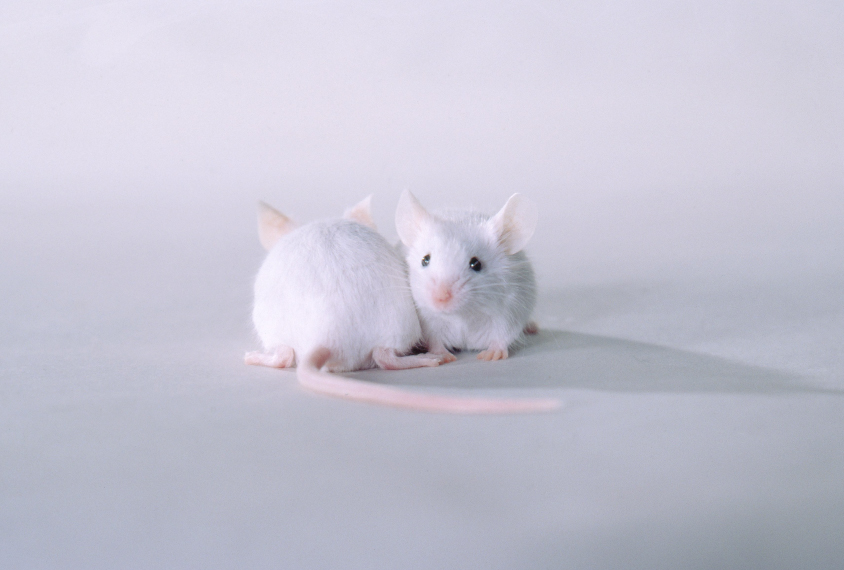
Brain’s reward region may drive social problems in autism
Having too many copies of an autism gene called UBE3A mutes a brain region that may mediate the satisfaction a person derives from social interactions.
Having too many copies of a gene called UBE3A mutes a brain region that may mediate the satisfaction a person derives from social interactions, suggests a new study in mice1. The findings hint at how excess UBE3A, which is linked to autism, leads to problems with social skills.
People with autism may find social interactions less rewarding than their typical peers do. The new work points to a possible mechanism for their lack of motivation, and suggests an avenue for therapy.
“If we can ramp up the activity of those neurons, we may be able to rescue social behavior,” says lead researcher Matthew Anderson, associate professor of pathology at Harvard University. “Ultimately, we might be able to find drugs that target the activity of those cells.”
UBE3A’s effect on this reward region, called the ventral tegmental area (VTA), relies on a key intermediary protein called cerebellin, or CBLN1. This protein interacts with other genes linked to autism, and so may be involved in autism generally, Anderson says.
The study solves the complex problem of identifying the brain circuits involved in behavior using multiple approaches, says Yong-Hui Jiang, associate professor of pediatrics at Duke University in Durham, North Carolina, who was not involved in the study. Still, it is unclear how well the mouse model recapitulates what happens in people, he says.
Seizure spinoff:
One or two extra copies of a strip of chromosome 15 that includes UBE3A leads to dup15q syndrome, which is characterized by severe seizures, motor and language delay and, sometimes, autism.
The researchers used mice with either one or two extra copies of the UBE3A gene. Mice with two extra copies tend to be disinterested in other mice, and vocalize less than their peers do.
Mice with one extra copy show this behavior only when researchers force the excess protein into the nucleus. Taking a clue from this observation, the researchers looked at gene expression in these mice.
They found hundreds of genes with altered expression, including many involved in excitatory signaling, which boosts brain activity. The levels of one gene in particular, CBLN1, drop in response to excess UBE3A, they found. CBLN1 forms a complex with members of two families of autism proteins — neurexins and GRID proteins — at the junctions between neurons.
CBLN1 levels in mice are also known to drop in response to brain activity. Excess brain activity can cause seizures, which in mice with excess UBE3A can lead to social deficits.
Putting these disparate pieces together, Anderson’s team came up with a hypothesis: The social problems in this model stem from a combination of seizures and too much UBE3A, and CBLN1 is a key player in this process.
One strength of the study is that the researchers explored their hunch in several ways.
They induced seizures in the mutant mice and confirmed both that CBLN1 levels drop and that the mice show social deficits. They then removed CBLN1 from only the excitatory neurons of control mice; these animals show the same social deficits as the mutants do.
The results lend credence to one side of an ongoing debate about the relationship between seizures and autism, says Jiang. “There’s always that question of whether autism is a co-morbidity for the seizure or the seizure is a comorbidity for the autism,” he says.
The new study suggests that seizures can produce autism features, even if the converse is also true.
Social hub:
To identify the brain circuits underlying the social deficits, the researchers introduced an extra copy of UBE3A in different sets of mouse neurons, and induced mild seizures in the mice.
Mice with excess UBE3A in neurons that produce either glutamate or dopamine are the only ones that show social deficits as a result, the researchers found. Glutamate is a chemical messenger that mediates excitatory signaling; dopamine is involved in reward.
Both sets of neurons are important players in the brain’s reward circuit — in particular, the VTA. A 2014 study implicated glutamate neurons in the VTA in a social circuit in mice. Deleting CBLN1 in glutamate neurons in the VTA produces social deficits in the mice.
The combination of mild seizures and excess UBE3A in the glutamate neurons of the VTA also leads to social deficits. Creating mice that make more CBLN1 in glutamate neurons of the VTA prevents this effect.
Together, these experiments suggest that CBLN1 in the VTA is “the key” to explaining the effect of UBE3A on social deficits, says Anderson.
“It is really intriguing that more and more papers report a role of VTA in social behaviors,” says Camilla Bellone, assistant professor of neuroscience at the University of Geneva in Switzerland, who was not involved in the study. Researchers should seek to understand the role of other types of neurons in that brain area, she says.
Anderson’s group plans to examine the effects of excess UBE3A on CBLN1 in other brain regions as well. They also aim to home in on the brain circuits underlying the severe seizures seen in people with excess UBE3A.
References:
- Krishnan V. et al. Nature 543, 507-512 (2017) PubMed
Corrections
This article has been modified from the original. A previous version incorrectly referred to CBLN1 as CLBN1.
Recommended reading

New organoid atlas unveils four neurodevelopmental signatures
Explore more from The Transmitter
Snoozing dragons stir up ancient evidence of sleep’s dual nature

The Transmitter’s most-read neuroscience book excerpts of 2025


